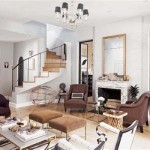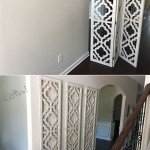Home Decor Colour Schemes: Inspiring Ideas and Expert Advice
Choosing the right color scheme for your home decor can significantly impact the overall ambiance and functionality of your living space. Whether you prefer bold and vibrant hues or subtle and calming tones, understanding color schemes is crucial to creating a cohesive and visually appealing interior.
Monochromatic:
A monochromatic color scheme revolves around a single color and its different shades and tints. This approach creates a sense of unity and sophistication, allowing you to explore the depth and versatility of a particular hue. For instance, a blue monochromatic scheme can range from pale turquoise to deep navy, offering a calming and serene atmosphere.
Analogous:
An analogous color scheme utilizes three colors adjacent to each other on the color wheel. These colors share similar undertones and create a harmonious and cohesive look. For example, a scheme combining blue, green, and yellow can evoke a sense of nature and freshness.
Complementary:
Complementary color schemes feature two colors directly opposite each other on the color wheel. This contrast creates a vibrant and eye-catching effect. However, it's important to use complementary colors in moderation to avoid overwhelming the space. A scheme combining red and green, for instance, can bring energy and vitality to a room.
Triadic:
A triadic color scheme uses three colors equally spaced around the color wheel. This arrangement offers a balanced and visually rich look. For example, a scheme combining red, yellow, and blue creates a dynamic and uplifting atmosphere.
Tetradic:
A tetradic color scheme involves four colors forming two complementary pairs. This approach allows for greater complexity and contrast while maintaining harmony. A scheme using red, blue, yellow, and green can create a bold and energetic ambiance.
Factors to Consider:
When choosing a color scheme, consider the following factors:
- Function of the room: Different rooms have different functions, which influence the appropriate color choices. For example, calming colors may be suitable for bedrooms, while vibrant hues may be more appropriate for living rooms.
- Size of the room: Dark colors tend to make a room feel smaller, while light colors can create an illusion of space. Choose colors accordingly to suit the dimensions of the room.
- Natural light: The amount of natural light a room receives can affect the way colors appear. Consider the orientation of the room and use colors that complement the available lighting.
- Personal preferences: Ultimately, the color scheme should reflect your personal taste and style. Experiment with different colors until you find a combination that resonates with you.
Expert Tips:
- Use a neutral base and add pops of color through accessories and textiles.
- Don't be afraid to mix different textures and patterns to create visual interest.
- Consider using a color wheel to guide your color choices and ensure harmony.
- Test paint colors on a small area of the wall before committing to a full room painting.
- Seek professional advice from an interior designer for more personalized and tailored recommendations.

Color Palette For Home 12 Combos Designers Love Havenly Interior Design Blog

20 Top Interior Color Schemes For Your House Design Foyr Neo

5 Tips To Help You Choose The Right Colour Scheme Home Decorating Ideas

20 Best Modern Home Color Palettes Room Combinations Offeo Interior House Colors Palette Living Combination

Interior Design Styles And Colour Schemes Berger Blog

15 Designer Tricks For Picking A Perfect Color Palette

Choosing Right Colors How To Use Psychology For Interior Design

20 Beautiful Bedroom Color Schemes Chart Included Colors

Color Palette For Home 12 Combos Designers Love Havenly Interior Design Blog

20 Top Interior Color Schemes For Your House Design Foyr Neo
Related Posts







